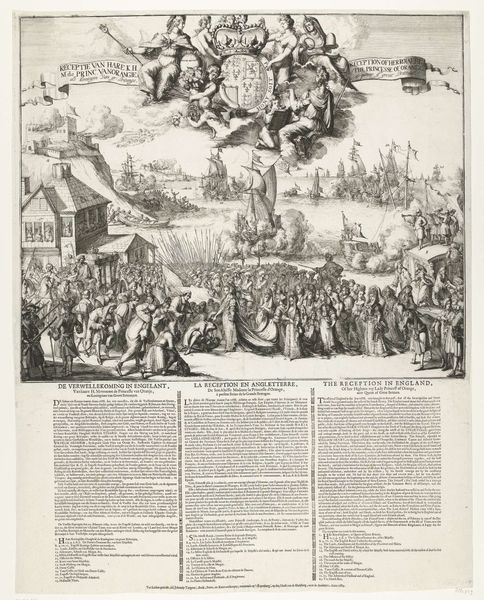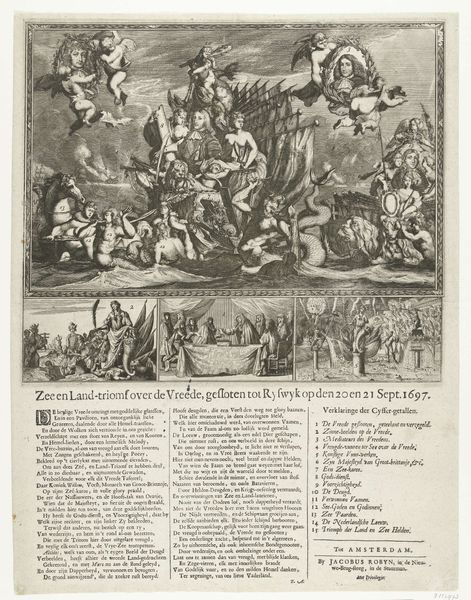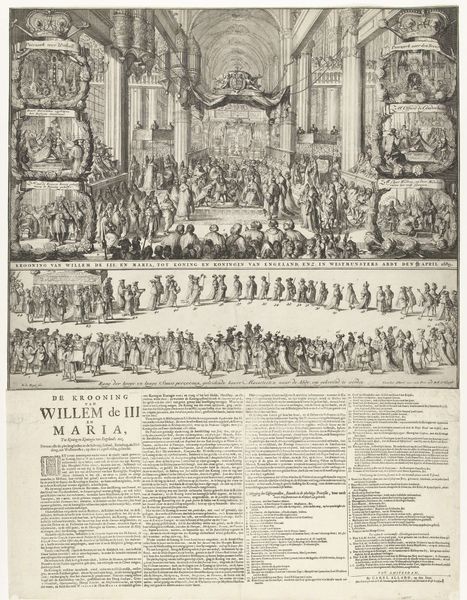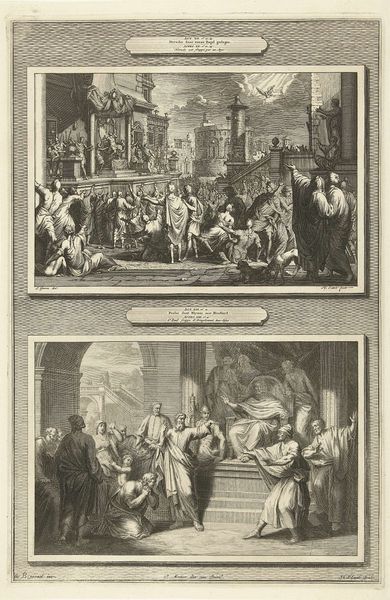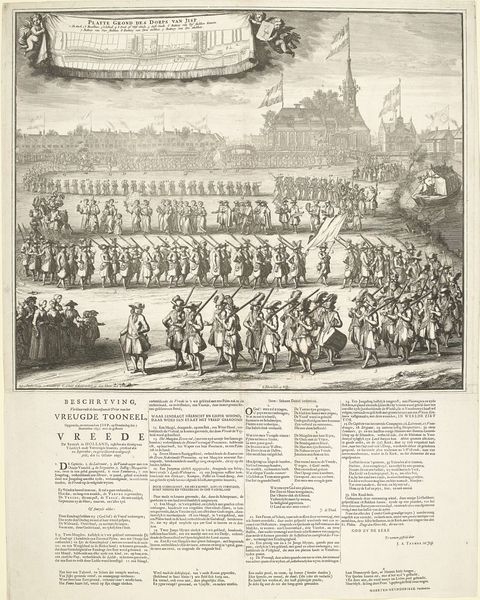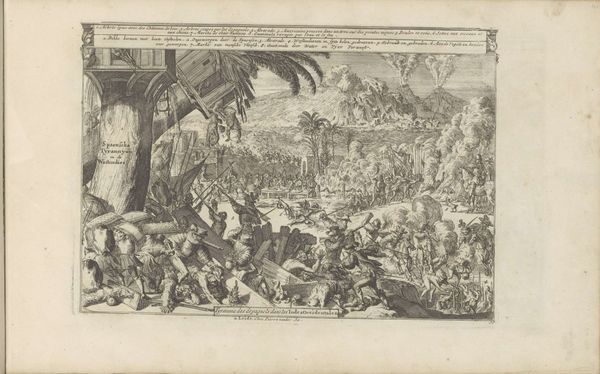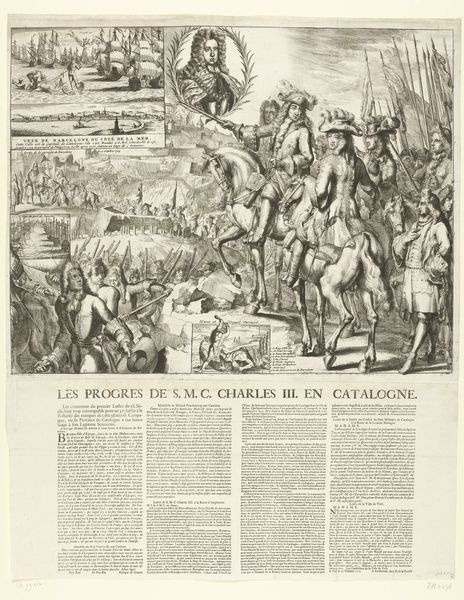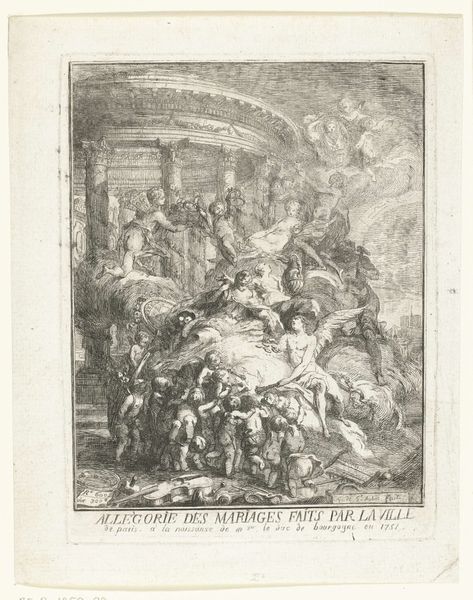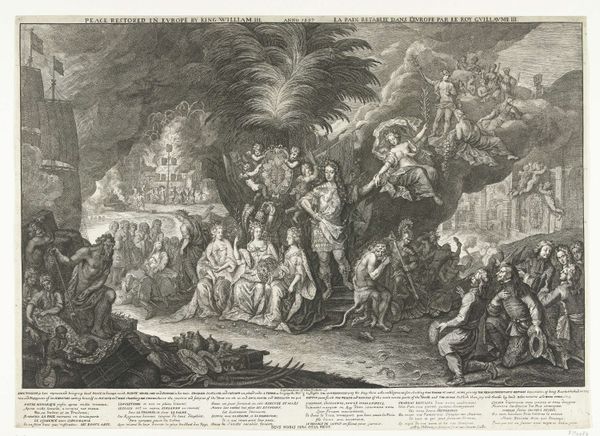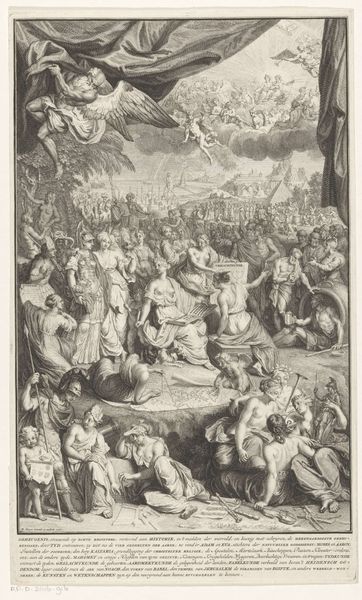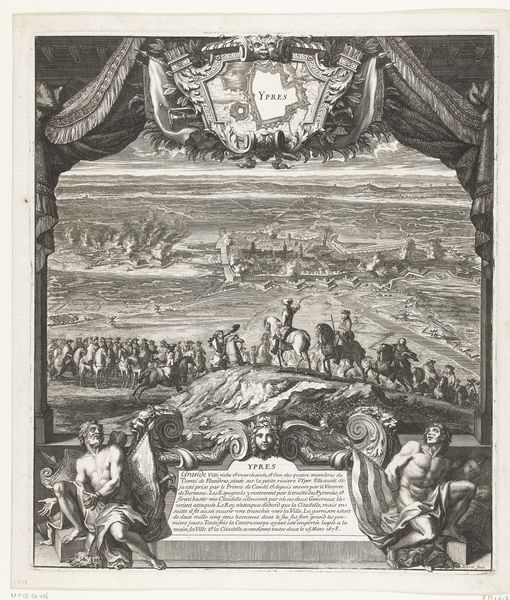
Hertogdom Gelre en graafschap Zutphen opgedragen aan Willem III, 1675 1675
0:00
0:00
romeyndehooghe
Rijksmuseum
print, engraving
#
baroque
# print
#
old engraving style
#
history-painting
#
engraving
Dimensions: height 411 mm, width 521 mm, height 218 mm, width 516 mm
Copyright: Rijks Museum: Open Domain
Editor: This is an engraving from 1675 by Romeyn de Hooghe, titled "Hertogdom Gelre en graafschap Zutphen opgedragen aan Willem III." It depicts what seems to be a historical scene, and the style feels very much of the Baroque era. The composition feels divided, almost like different scenes placed together. How do you interpret this work, considering its historical context and the artist's choices? Curator: This print offers a fascinating glimpse into the political imagery of the Dutch Golden Age. Hooghe was a master of propaganda, and prints like these were instrumental in shaping public opinion. Notice how William III is depicted in both the earthly and heavenly realms – what does that suggest about his perceived legitimacy? Editor: It seems to emphasize a sort of divine right, or at least divinely ordained leadership. Were prints like this common, used to legitimize rulers? Curator: Exactly. In the 17th century, especially after the Dutch Republic transitioned into the Stadtholderate, imagery was a key battleground. Consider the audience for these prints – who were they intended to reach, and what messages were they meant to internalize? Editor: Perhaps not the elite, who had other ways of knowing and consuming imagery. More so a wider public that had to be convinced? And do you think this particular print achieved its goals? Curator: Undoubtedly, though how successfully is hard to quantify. What's clear is the intent: to associate William III with strength, divinely ordained leadership, and ultimately, stability. Considering the Anglo-Dutch wars and political turmoil, such messages held significant weight. Editor: I hadn't thought about it so directly as propaganda, but framing it this way makes the artistic choices far more deliberate and purposeful. Thanks! Curator: And looking at it from this point, we understand more clearly how powerful public images really were during the period.
Comments
No comments
Be the first to comment and join the conversation on the ultimate creative platform.
